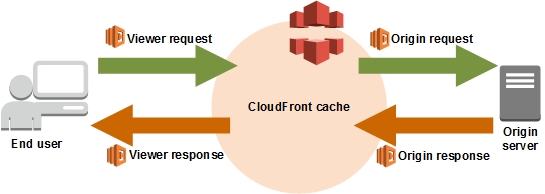Networking & Content Delivery
Tag: Serverless
External Server Authorization with Lambda@Edge
Introduction In this blog post, we will explain how you can use Lambda@Edge to authorize requests to Amazon CloudFront by forwarding authorization data to external authorization servers. We will outline the sequence of requests in such a workflow, the steps for implementation with Node.js sample code, and a CloudFormation template for a simple external test […]
Integrating Network Connectivity Testing with Infrastructure Deployment
This post shows how to integrate and automate network testing as part of AWS infrastructure deployment. We will show you how to use a new tool, Infrastructure as Code (IaC) Network Tester, to perform connectivity testing between a source resource and a destination resource in Virtual Private Cloud (VPC). It supports testing resources deployed via AWS Management Console, SDK, Command Line Interface (CLI) or via a CI/CD pipeline.
Updating AWS Global Accelerator EC2 endpoints automatically based on Auto Scaling group events
AWS Global Accelerator is a network layer service that directs traffic to optimal endpoints over the AWS global network, this improves the availability and performance of your internet applications that are used by a global audience. It provides static IP addresses that act as a fixed entry point to your application endpoints in a single or multiple […]
Handling Redirects@Edge Part 2
In continuation with our series on Handling Redirects@Edge, in this blog post, we will explore how you can leverage Amazon CloudFront, Lambda@Edge and Amazon Simple Storage Service (S3) to offload the origin from URL redirection with more advanced capabilities. As part of this solution, we offer a simple custom-built user interface to define and manage […]
Handling Redirects@Edge Part 1
A HTTP URL redirect is a webserver function that redirects a user to a different URL from the one they originally requested. Redirections are useful when you want a short easy to remember URL which when accessed redirects you to the actual landing page. URL shortener services are a good example of this use case. […]
Generating dynamic error responses in Amazon CloudFront with Lambda@Edge
Amazon CloudFront allows you to create custom error pages for specific HTTP status codes and to change response codes. CloudFront also offers origin failover capability, with which you can easily set up failover logic between combinations of AWS origins or non-AWS custom HTTP origins. This creates minimal interruption in your viewer’s experience. However, while these […]
Leveraging external data in Lambda@Edge
Introduction Lambda@Edge is a feature of Amazon CloudFront that allows developers to implement custom logic for manipulating HTTP request/response exchanges or generating responses on the fly with low latency. Lambda@Edge empowers our customers with a full programming language (Node.js) to implement advanced logic. Learn more at edge networking with AWS. While customers often write stateless […]
Leveraging Lambda@Edge for AdTech: Cookie Syncing at the Edge
In online advertising, cookies play a key role in identifying and profiling users. They allow advertisers to display targeted and personalized ads to users as they browse the internet, from a desktop browser or mobile browser. Advertisers can achieve this personalization by assigning a cookie to users when their ads are displayed on websites or […]
Building a Serverless Subscription Service using Lambda@Edge
Personalizing content helps to drive subscriptions, improve revenue, and increase retention rates by providing a more engaging and responsive customer experience. In this blog post, we’ll show you how to build a serverless subscription service for your website that personalizes and monetizes content by using Amazon CloudFront and AWS Lambda@Edge. Customers have typically used content delivery networks […]
Lambda@Edge Design Best Practices
Lambda@Edge transforms CloudFront into a highly programmable CDN with serverless compute capabilities closer to your viewers around the world. This blog is the first in a series that explains best practices associated with using Lambda@Edge functions to customize your content delivery.









